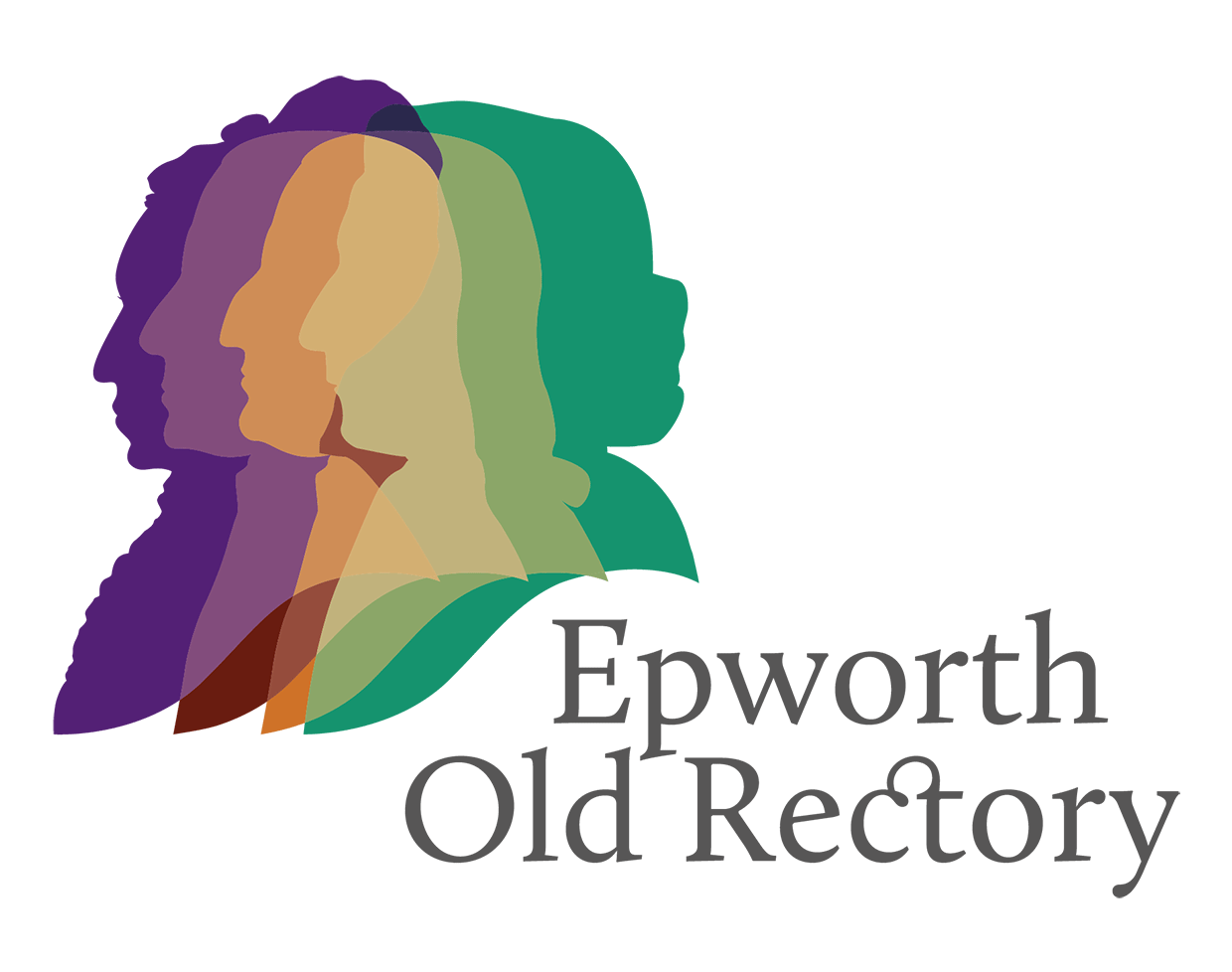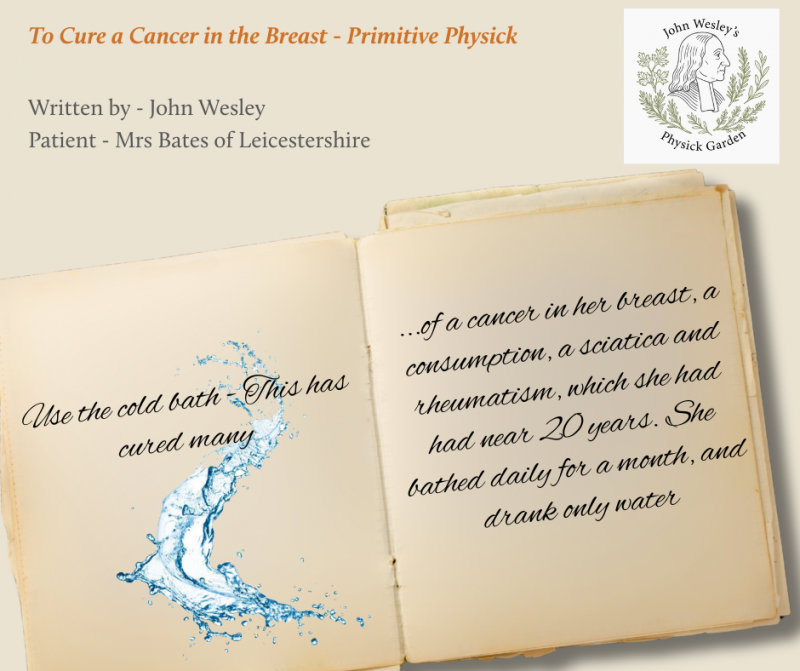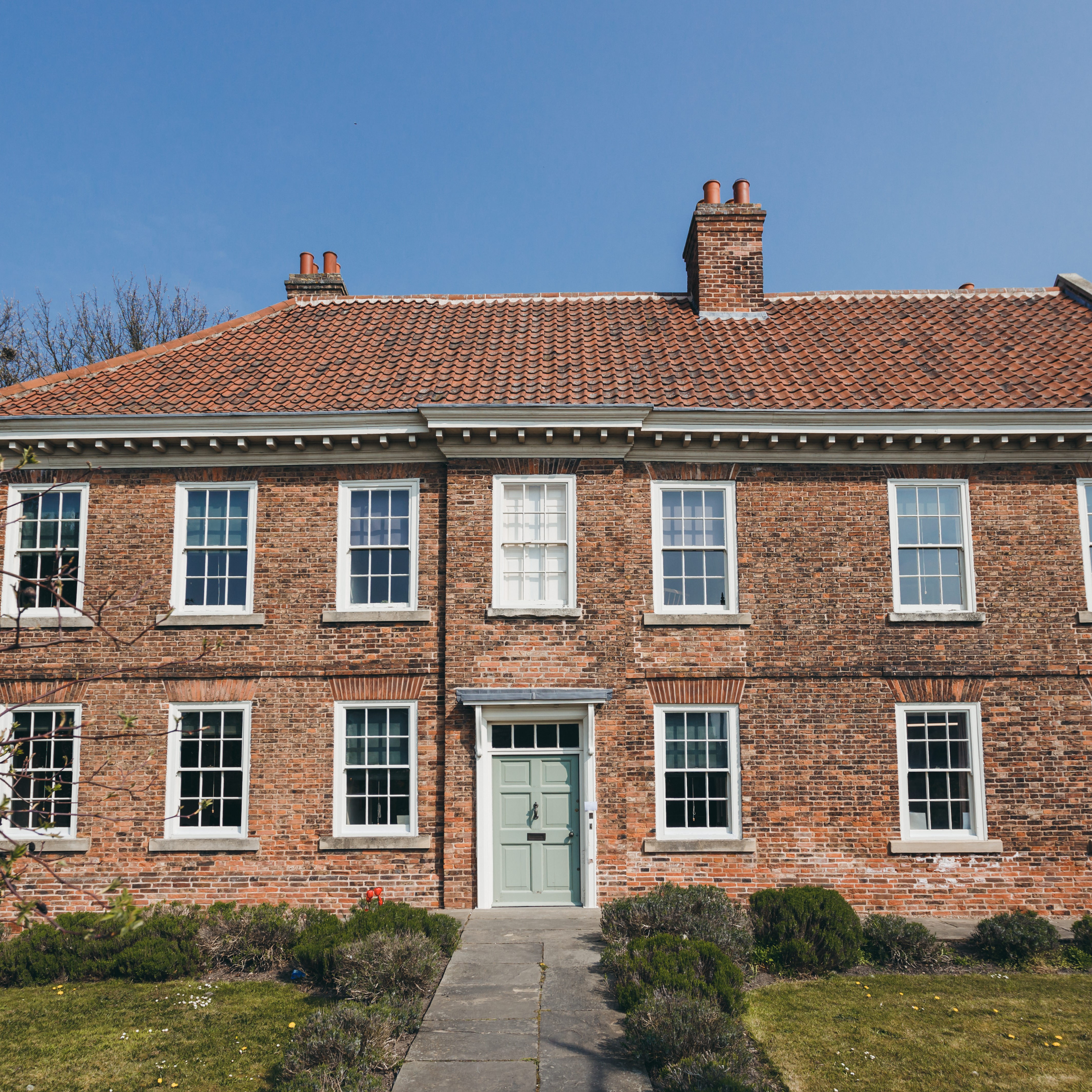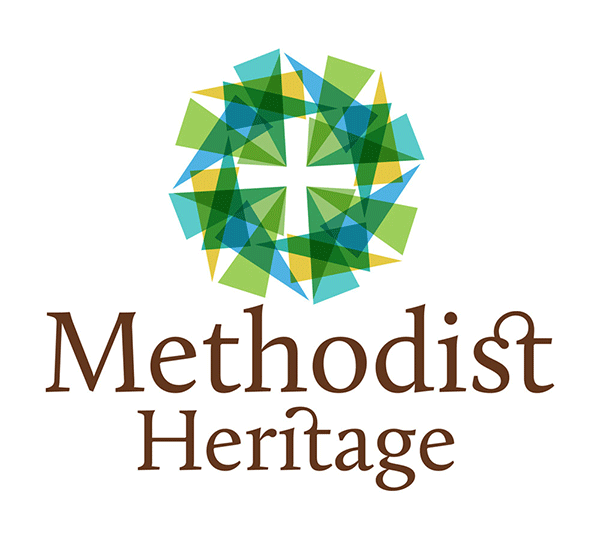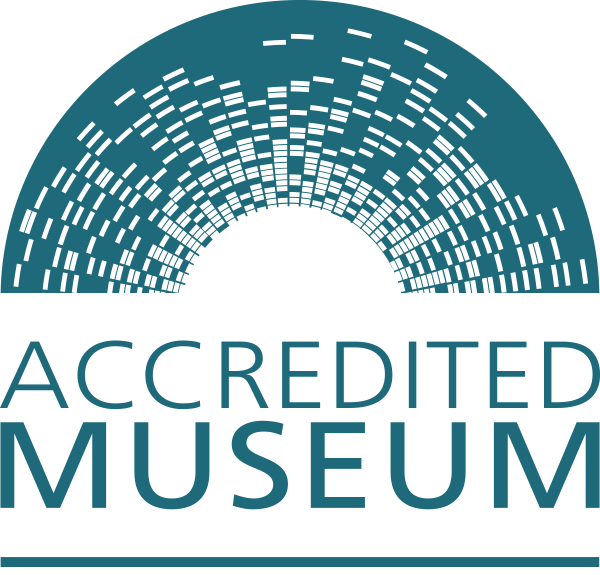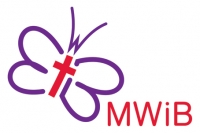The numbers listed under each plant are the number of the remedy as it appears in the 1780 edition of Primitive Physick.
Rose (Rosa)
 From ancient Greece and Rome through medieval and Renaissance Europe to traditional Iranian and Ayurvedic practices, roses were valued for their astringent, cooling properties and ability to strengthen the heart.
From ancient Greece and Rome through medieval and Renaissance Europe to traditional Iranian and Ayurvedic practices, roses were valued for their astringent, cooling properties and ability to strengthen the heart.
Wesley’s recommendations:
26 – Cancer of the Breast – A cancer of 13 years, standing, was cured by frequently applying red poppy water, plantain and rose water, mixed with honey and roses. Afterwards, the water alone perfected the cure.
Other Therapies
During the Second World War, rosehip syrup was given to children to ensure they were consuming ample vitamin C, as imported fruit was harder to come by. Children were encouraged to collect rose hips for the Ministry of Health. In 1941, there were 200 tons of hips collected and processed into a National Rose Hip Syrup which was available at chemists for families to purchase as a supplement.
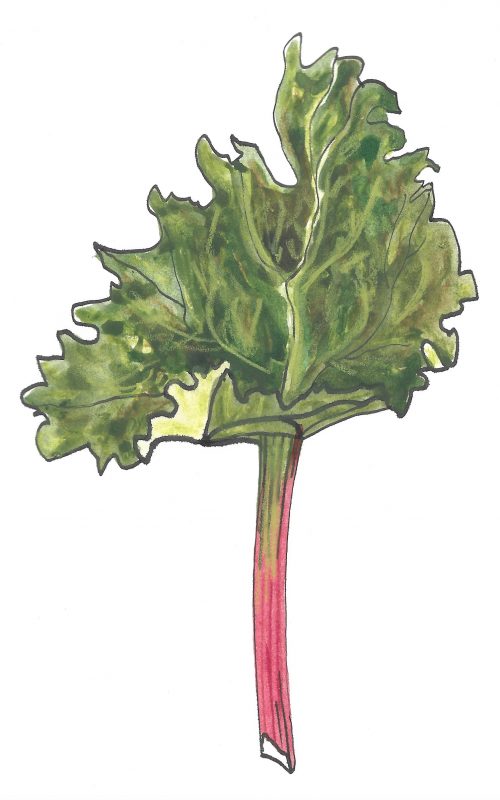 Rhubarb (Rheum palmatum)
Rhubarb (Rheum palmatum)
The earliest records of rhubarb date from China in 2700BC and it was grown in Europe in the early 1700s. It was used medicinally as a strong purgative. The annual value of imports to Britain for this purpose was once calculated to be £200,000. It was first mentioned as a food plant by the French in 1778, for making pies and tarts. Forcing and blanching were discovered by chance at the Chelsea Physic Garden, when roots were accidentally covered with debris from the clearing out of a ditch.
Wesley’s recommendations:
138 – Jaundice in Children – Take half an ounce of fine rhubarb, powdered, mix with it, thoroughly, by long beating, two handsful of good well cleansed currants. Of this give a tea-spoon every morning.
For the Rheumatism – pound the green stalks of English rhubarb in May or June, with an equal quantity lump of sugar. Take the quantity of a nutmeg of this three or four times daily. This seldom fails – JOHN WESLEY
Other therapies
The rhubarb referred to in Wesley’s Physic is probably Chinese rhubarb where the root of rhubarb is used in medicine. Low doses arrest diarrhoea; high doses are laxative but not often used. The rhubarb we eat, and is planted in our garden, is the fleshy, English or garden rhubarb.
Plantain (Plantago)
The first record of its medicinal use is from China between 206BC and 23AD. In many parts of the world plantain is known as “the white man’s foot”, alluding to the way that it was spread world-wide in colonial times in the trouser turn-ups of European men. Typically dismissed as a weed, plantain has a long history of use as a healing plant, often called “nature’s band-aid.”
Wesley’s recommendations:
26 – Cancer of the Breast – A cancer of 13 years standing, was cured by frequently applying red poppy water, plaintain and rose water, mixed with honey and roses.
28 – Cancer of the Mouth – Boil a few leaves of succory, plaintain and rue, with a spoonful of honey, for a quarter of an hour. Gargle with this often in an hour.
Other therapies
Plantain leaves are super-nutritious and loaded with vitamins and minerals. They are high in vitamins A, C, and K, as well as being a source of iron, calcium, and magnesium.
Goosegrass / Cleavers (Galium aparine)
Known for its characteristic Velcro-like stems, cleavers is an annual wildflower native to the UK. Its equally ‘sticky’ seeds are easily brought into gardens and the resultant plants can be a nuisance in garden beds, but its has also been used for centuries in traditional medicine. With its powerful detoxifying, healing, and anti-inflammatory properties, this unassuming plant offers a variety of health benefits. Also known as sweetheart, hitchhikers, cleavers, clivers, bedstraw, goosegrass, catchweed, stickyweed, sticky bob, stickybud, stickyback, sticky molly, robin-run-the-hedge, sticky willy, sticky willow, stickyjack, stickeljack, grip grass, sticky grass, bobby buttons, whippysticks, and velcro plant.
Wesley’s recommendations:
26 – A Bleeding Cancer – was cured by drinking twice a day quarter of a pint of clivers or goosegrass, and covering the wounds with the bruised leaves.
199 – Scurvy – Take a cupful of the juice of goose grass in a morning, fasting for a month: it is frequently called hariff or cleavers. I have known many persons cured by it.
For Scurvy – Take morning and evening a spoonful or two of lemon juice and sugar. It is a precious remedy, and well tried – DR. MACBRIDGE
Other therapies
Goose grass is a natural lymphatic tonic that helps clear and detoxify the lymphatic system. By improving lymph flow, it supports the body’s natural ability to remove toxins and reduces swelling in conditions like lymphedema. It has diuretic properties, meaning it helps increase urine production and flush toxins from the kidneys and urinary tract. It can be beneficial for managing urinary tract infections (UTIs) and preventing kidney stones.
Rue (Ruta graveolens)
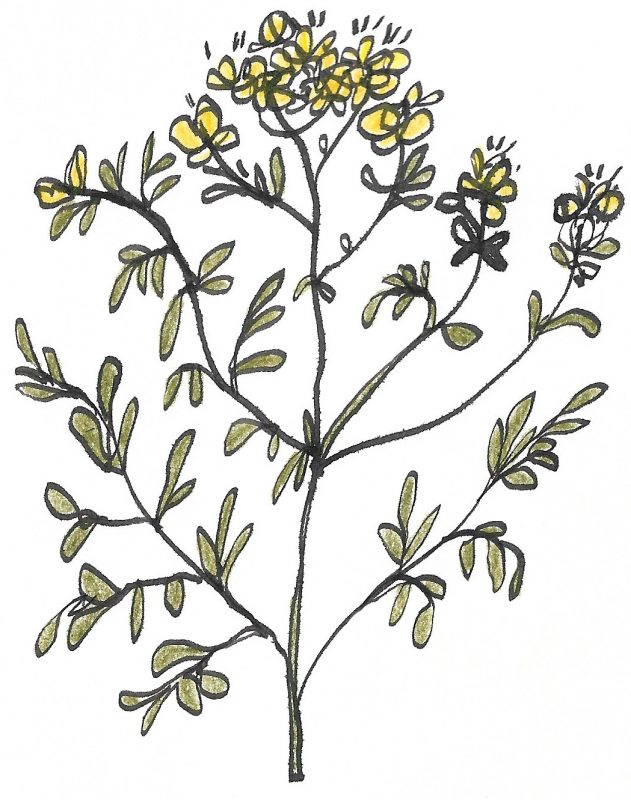 In ancient times, rue was an important culinary and medicinal herb. It’s mentioned in the Bible by its Greek name, peganon. The botanical, Latin name of Ruta comes from Greek, translated as “to set free,” referring to its use as a chief ingredient in mixtures used as antidotes to poisoning.
In ancient times, rue was an important culinary and medicinal herb. It’s mentioned in the Bible by its Greek name, peganon. The botanical, Latin name of Ruta comes from Greek, translated as “to set free,” referring to its use as a chief ingredient in mixtures used as antidotes to poisoning.
Wesley’s recommendations:
28 – Cancer in the Mouth – Boil a few leaves of succory, plaintain and rue, with a spoonful of honey, for a quarter of an hour. Gargle with this often in an hour.
266 – A Malignant Ulcer – Foment morning and evening with a decoction of mint; then sprinkle on it finely powdered rue.
Other therapies
Rue has been used as an anti-inflammatory to treat cramps, external ulcers, rheumatism, eczema, and systemic infections; as an antidote for scorpion and snake venom; as an insect repellent; and as an herbal decoction for warding off evil spirits. It is also known to cause reddening, burning, itching and photodermatisis (sun poisoning rash) when rubbed on skin that has been exposed to sunlight. (TOXIC)
Celandine (Chelidonium majus)
Celandine is a perennial member of the Poppy family, and is commonly used in Korean and Chinese medicine but also has a long history of use in Europe. Between AD 27 and 79 Pliny thought that swallows used the orange sap to clear their eyes. In the 17th century the Doctrine of Signatures suggested that as the sap resembled bile the plant should be used for treating liver disorders.
Wesley’s recommendations:
26 – Cancer of the Breast – Apply goose dung and celandine, beat well together and spread on a fine rag. It will both cleanse and heal the sore.
137 – Jaundice – Wear leaves of celandine upon and under the feet.
Other therapies
Celandine is used almost exclusively as a component of herbal remedies to treat stomach colic and vascular and bronchial spasm. It is used externally for chronic eczema and the sap from fresh plant is used to remove some forms of warts. It is TOXIC and must only be used under correct supervision.
Carrot (daucus carota)
In years gone by, the carrot was considered positively exotic! It is thought that the carrot first came from Afghanistan sometime around the 7th Century AD, when they were originally purple. Carrots were known to both the Greeks and Romans. In fact, the Greeks called the carrot Philtron and used it as a love medicine.
Wesley’s recommendations:
26 – Cancer of the Breast – apply a poultice of scraped carrots.
Other therapies
One of the most common uses of carrots in ancient medicine was to ease digestive issues. Early healers believed that consuming cooked carrots helped relieve upset stomachs and bloating. Texts from Ancient Greece and Rome suggest that carrots were often boiled and mashed to create a soft, easy-to-eat dish for anyone suffering from indigestion.
Betony (Betonica officinalis)
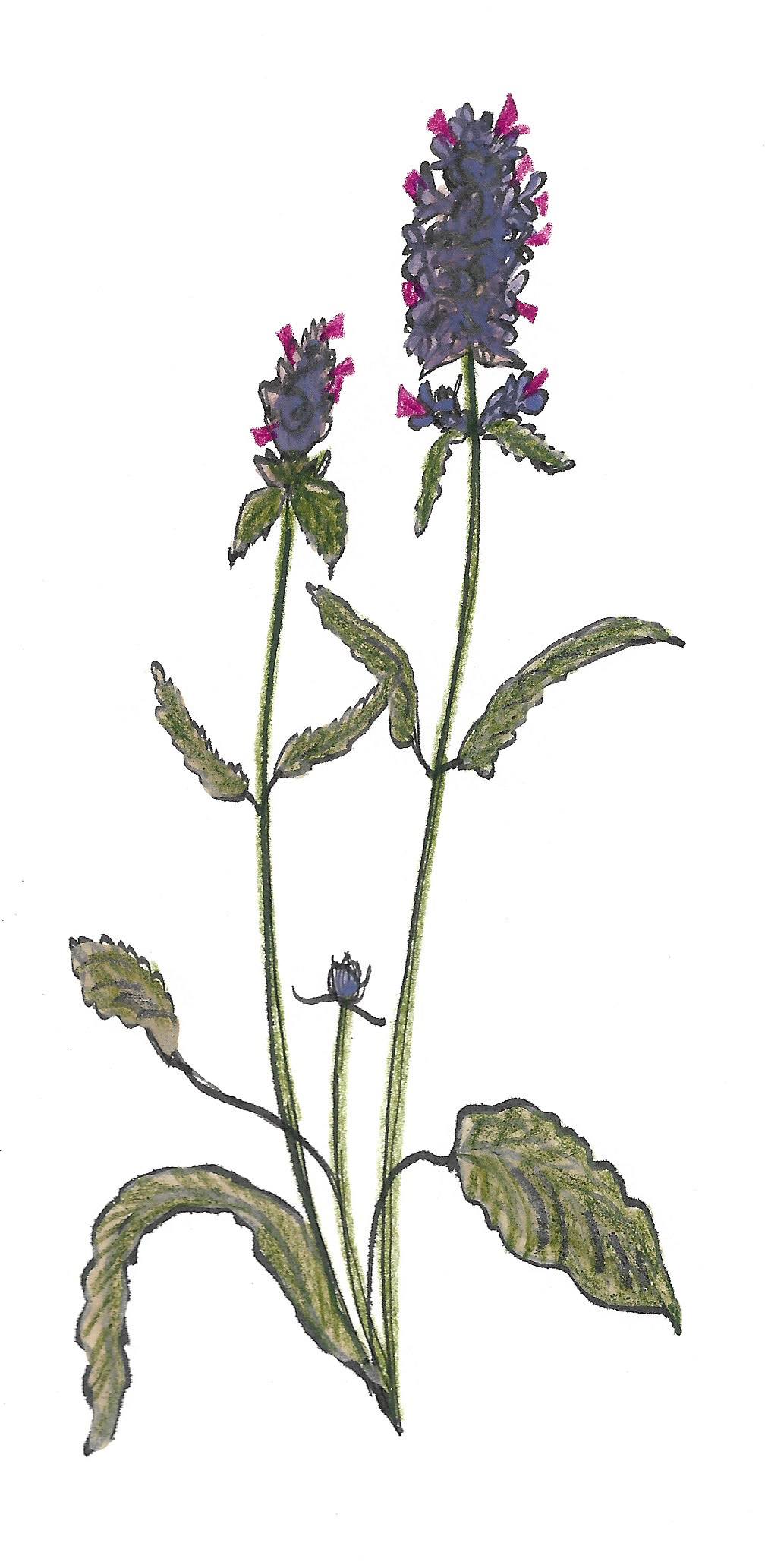 In his Natural History, Pliny the Elder claims betony was “a plant more highly esteemed than any other”, and documents a popular belief that merely possessing betony would protect a house from harm.
In his Natural History, Pliny the Elder claims betony was “a plant more highly esteemed than any other”, and documents a popular belief that merely possessing betony would protect a house from harm.
Wesley’s recommendations:
206 – A Long-running Sore in the Back – was entirely cured by eating betony in everything.
264 – A Fistulous Ulcer – Apply wood betony bruised, changing it daily.
Other therapies
Modern herbalists prescribe betony to treat anxiety, gallstones, heartburn, high blood pressure, migraine and neuralgia, and to prevent sweating. It can also be used as an ointment for cuts and sores.
Parsnip (Pastinaca sativa)
Parsnips have a long history as both a food source and traditional medicine, notably with Roman Emperor Tiberius importing them and medieval Europeans eating them as a staple food before potatoes. In Persian medicine, parsnips were used as a laxative and for kidney stones. John Wesley’s reference may refer to cow parsnip (Heracleum sphondylium) or perhaps hogweed.
Wesley’s recommendations:
27 – A Cancer in any other part – Stamp the flowers, leaves and stalks of wild parsnips, and apply them as a plaister, changing it every twelve hours. It usually cures in a few days.
To cure the cancer in the mouth – blow the ashes of a scarlet cloth into the mouth or throat. It seldom fails – JOHN WESLEY
Other therapies
Parsnips were also thought to have warming and strengthening qualities, making them a suitable food for convalescents. In some cultures, parsnip poultices were applied to wounds and sores to promote healing.
Turnip (brassica rapa)
Turnips are thought to originate in northern Europe around 2000 BC. Gerard’s Herball of 1597 suggests using the oil from the seed of turnips to kill worms in children. They were also used in a cure for coughs in the form of lightly fermented juice of sliced turnip. This apparently also worked for whooping cough.
Wesley’s recommendations:
199 – Scurvy – Live on turnips for a month.
Other therapies
Besides being an important vegetable and source of oil, turnip is also used as a traditional medicine for the treatment of headaches, chest complaints, rheumatisms, oedemas, gonorrhoea, syphilis, and rabies.
